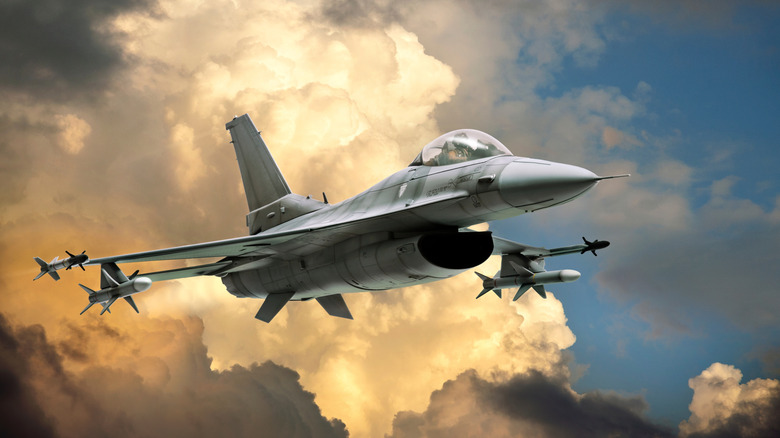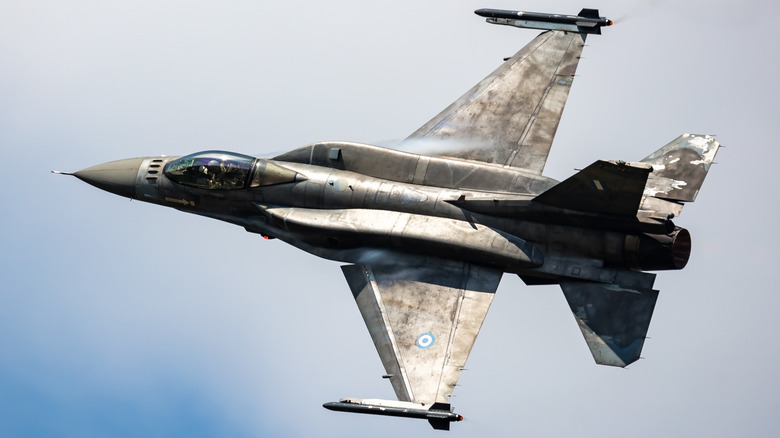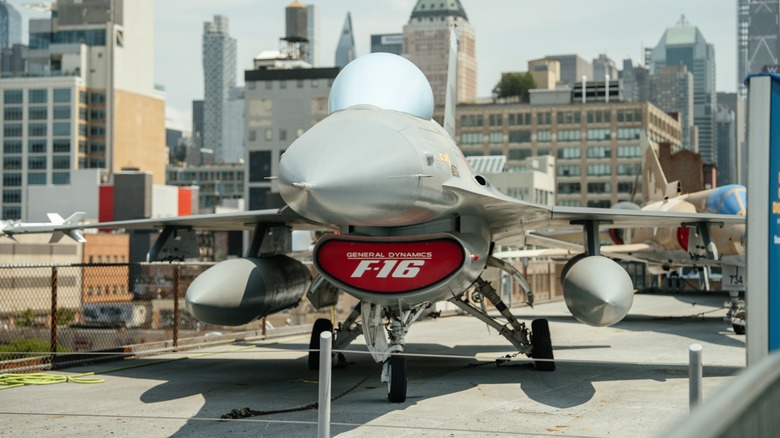Why Does The F-16 Have A Bubble Canopy?
Building a superior fighter jet to conquer the skies takes a lot of forward thinking, planning, and innovation. Enter the F-16 Falcon and its single-piece frameless bubble canopy. It was the first of its kind and created alongside the F-16's Lightweight Fighter program and reclined seat in the 1970s. This groundbreaking technological development transformed military aviation by putting the pilot's needs first. It provided something fighter pilots didn't have before: an unmatched, clear 360-degree field of vision while flying.
Before the F-16 bubble canopy began its service in 1979, previous fighter jets like the Mikoyan-Gurevich MiG-21 or the F-4 Phantom II had framed greenhouse-style canopies, resulting in blind spots that limited the pilot's view. This ultimately put them at a disadvantage on missions, especially in dogfights, where fast visual targeting means survival. The F-16 bubble canopy gives pilots all the visual capability they need, letting them see not only enemy aircraft, but threats on the ground, and formation partners without obstructions.
The F-16 bubble canopy and its complementing features
The F-16 bubble canopy was developed by the Air Force Research Laboratory and designed to be bird strike resistant and to jettison cleanly without the need for canopy breakers on the pilots' helmets. The sweeping perspective isn't achieved by the canopy alone; it works in tandem with the F-16's interior, including an elevated seat that's reclined at a 30-degree angle, giving pilots a unique view over the aircraft's nose and the ability to look down over the sides to see the ground during low-level flight. The seating position also improves the pilot's g-tolerance (up to 9g) when compared to other jets with an upright seating position.
When g-forces are increased from extreme maneuvers like tight turns, steep inclines, and declines, it's difficult for blood to flow to the brain. The improved seating angle distributes blood more evenly throughout the body, essentially counteracting the effects of what's called g‑LOC (g‑force induced loss of consciousness). Another feature of the polycarbonate frameless bubble canopy is what's known as HydroSkip, which makes rain instantly bead and disperse, preventing it from clouding the pilot's vision.
Why this design still matters today
The F-16 is one of the few fighter jets that has a true frameless bubble canopy, with pilots who have flown it praising its design. The ability to have such an unobstructed field of view makes reaction times quicker and maneuverability easier. This landmark achievement in pilot visibility has directly influenced how newer aircraft like the more stealth-focused F-35 Lightning II approached its situational awareness, while raising the bar a few notches digitally. Maintaining the primary objective of providing pilots with the best possible outside view of the aircraft, the F-35 prioritizes stealth and requires a thicker canopy with a built-in frame.
To adjust for this blind spot, the fighter jet uses an all-encompassing situational awareness digital system called Distributed Aperture System (DAS), using infrared cameras and a Helmet-Mounted Display (HMD) to paint a high-resolution, real-time view around the plane. Despite this advanced visual system, many pilots still say that the physical visual line of sight from the F-16 canopy offers better reaction times and situational awareness over the F-35. There are more than 3,000 F-16s still in operation all over the world, proving the frameless bubble canopy design's staying power.


